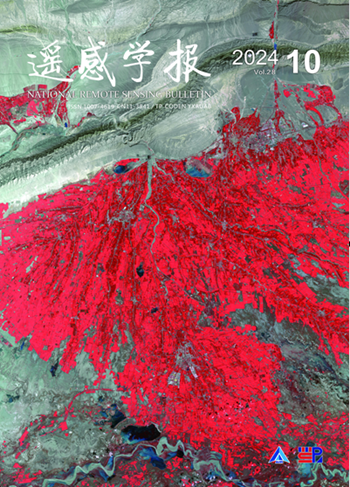“Case-1”水的两面性
引用次数: 1
摘要
Morel的“上层海洋与其生物物质含量的光学建模(案例I水域)”(J.Geophys.Res.-Oceans,Vol.93,pp.107,49-107681988)为基于叶绿素浓度([Chl],单位为mg/m3)对自然水域的光学特性建模奠定了基础。正如摘要中所述,它旨在“初步解释海洋案例I水域的光学行为”,其中“叶绿素样色素浓度被用作量化藻类物质的指标”,因为[Chl]在海洋/海洋调查中是常规测量的。具体而言,Morel开发了“该指数与透光层深度、下流辐照度衰减系数的光谱值或散射系数之间的统计关系”,并进一步开发了“颜料依赖光学模型”。因此,当提供[Chl](“该指数”)时,这样的系统允许海洋学应用的许多方面。该系统在一定程度上确立了传统海洋颜色遥感的核心[Chl]。然而,为了实现该系统,有必要全面了解该实例-1/实例-2系统的定义和演变,特别是实例-1/病例-2的定性定义与实例-1/案例-2的实际分离以及实例-1水的光学性质的定量建模。本文章由计算机程序翻译,如有差异,请以英文原文为准。
The Two Faces of “Case-1” Water
Morel’s “Optical modeling of the upper ocean in relation to its biogenous matter content (Case I waters)” (J. Geophys. Res. - Oceans, Vol. 93, pp. 107,49-10,768, 1988) laid the groundwork to model the optical properties of natural waters based on the concentration of chlorophyll ([Chl], in mg/m3). As stated in the abstract, it aims “tentatively to interpret the optical behavior of oceanic case-I waters,” where “Chlorophyll-like pigment concentration is used as the index to quantify the algal materials,” because [Chl] is routinely measured in marine/oceanic surveys. Specifically, Morel developed “statistical relationships between this index and the depth of euphotic layer, the spectral values of the attenuation coefficient for downwelling irradiance, or the scattering coefficient,” and further, “a pigment-dependent optical model is developed.” Thus, such a system allows many aspects of oceanographic applications when [Chl] (“this index”) is provided. In part, this system established [Chl] at the core of traditional ocean color remote sensing. To implement this system, however, it is necessary to have a complete understanding of the definition and evolution of this Case-1/Case-2 system, especially the qualitative definition of Case-1/Case-2 vs. the practical separation of Case-1/Case-2 as well as the quantitative modeling of the optical properties of Case-1 waters.
求助全文
通过发布文献求助,成功后即可免费获取论文全文。
去求助
来源期刊

遥感学报
Social Sciences-Geography, Planning and Development
CiteScore
3.60
自引率
0.00%
发文量
3200
期刊介绍:
The predecessor of Journal of Remote Sensing is Remote Sensing of Environment, which was founded in 1986. It was born in the beginning of China's remote sensing career and is the first remote sensing journal that has grown up with the development of China's remote sensing career. Since its inception, the Journal of Remote Sensing has published a large number of the latest scientific research results in China and the results of nationally-supported research projects in the light of the priorities and needs of China's remote sensing endeavours at different times, playing a great role in the development of remote sensing science and technology and the cultivation of talents in China, and becoming the most influential academic journal in the field of remote sensing and geographic information science in China.
As the only national comprehensive academic journal in the field of remote sensing in China, Journal of Remote Sensing is dedicated to reporting the research reports, stage-by-stage research briefs and high-level reviews in the field of remote sensing and its related disciplines with international and domestic advanced level. It focuses on new concepts, results and progress in this field. It covers the basic theories of remote sensing, the development of remote sensing technology and the application of remote sensing in the fields of agriculture, forestry, hydrology, geology, mining, oceanography, mapping and other resource and environmental fields as well as in disaster monitoring, research on geographic information systems (GIS), and the integration of remote sensing with GIS and the Global Navigation Satellite System (GNSS) and its applications.
 求助内容:
求助内容: 应助结果提醒方式:
应助结果提醒方式:


